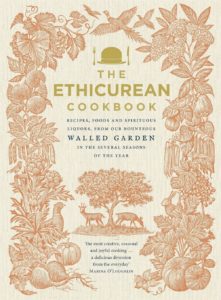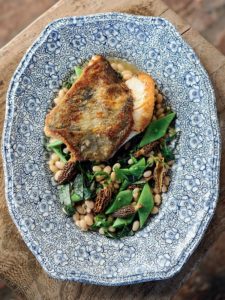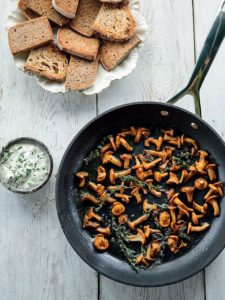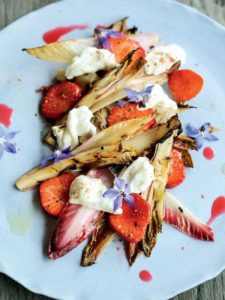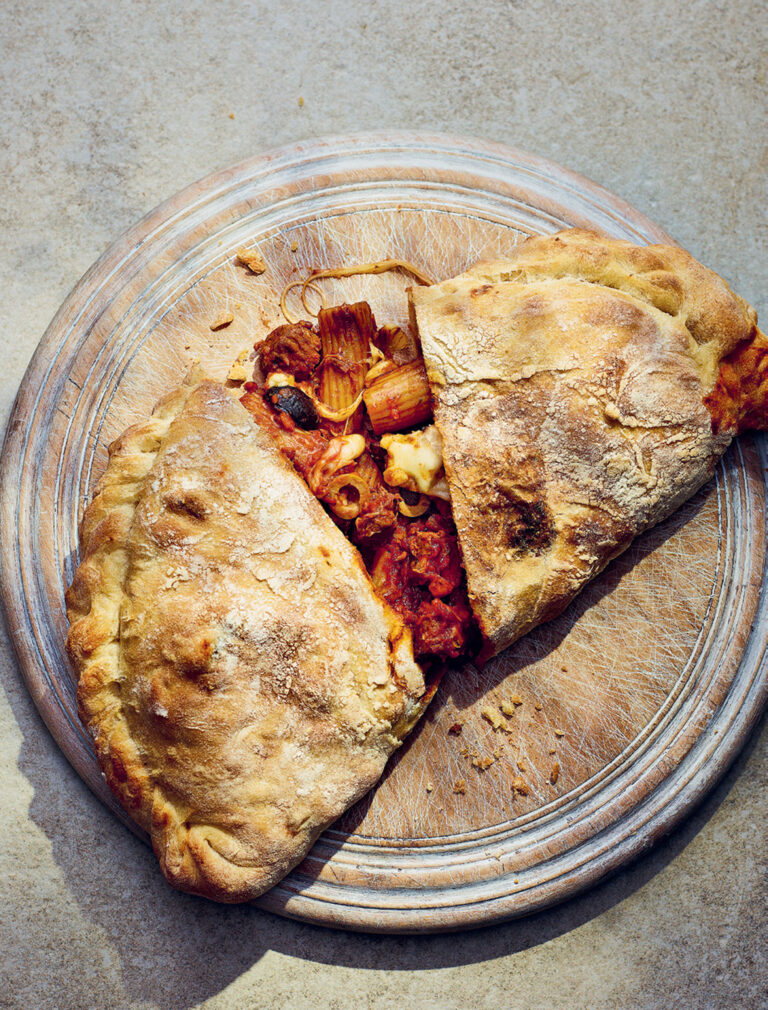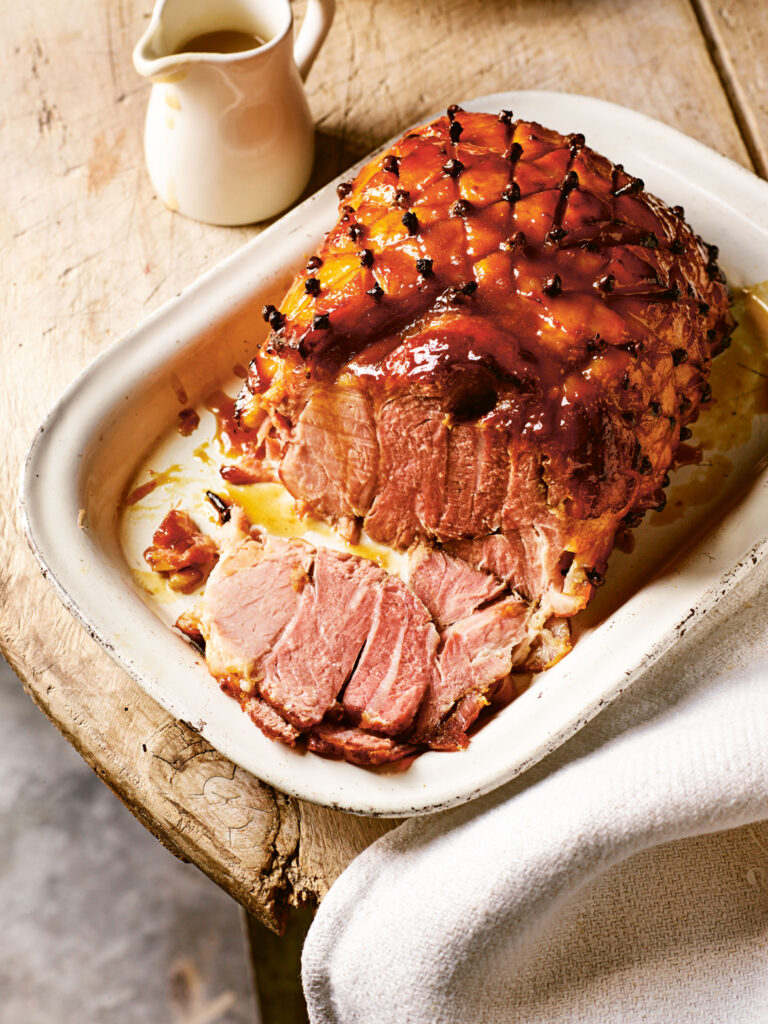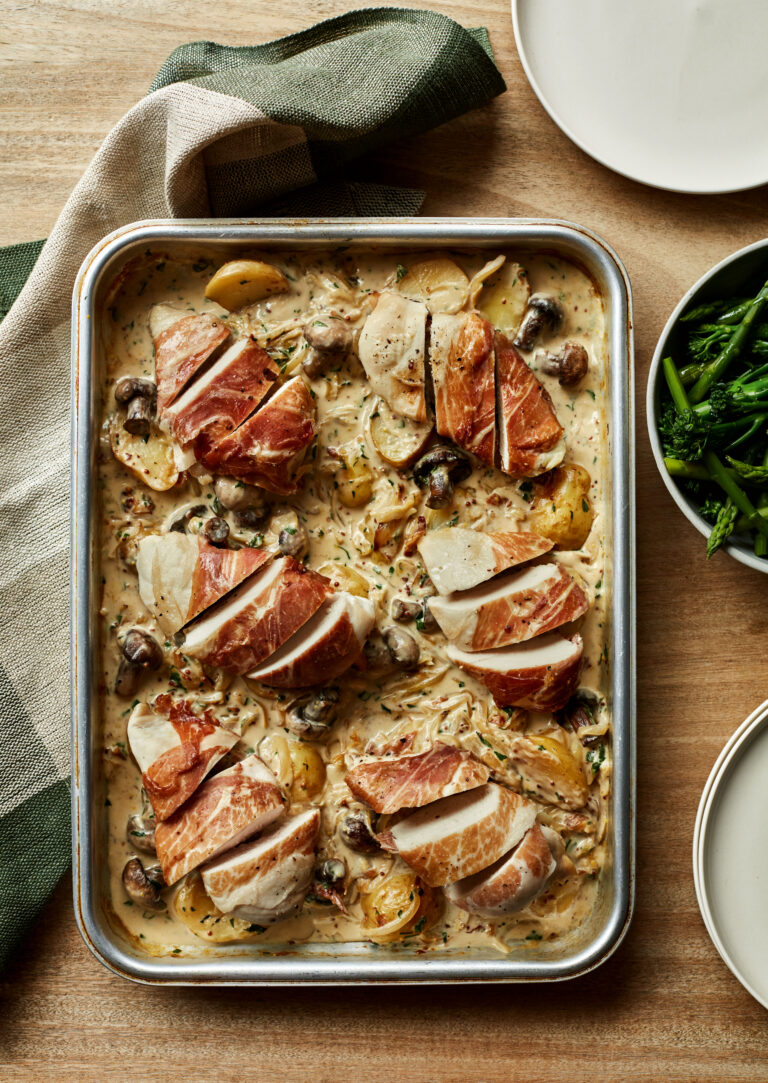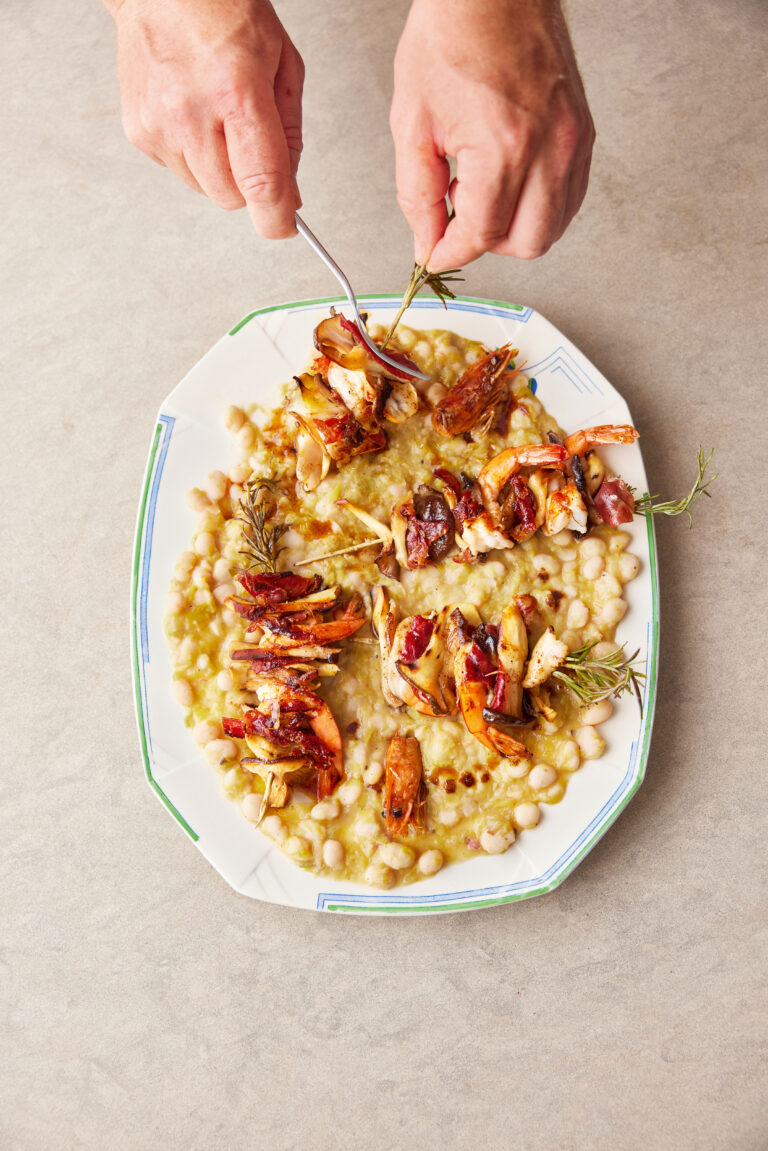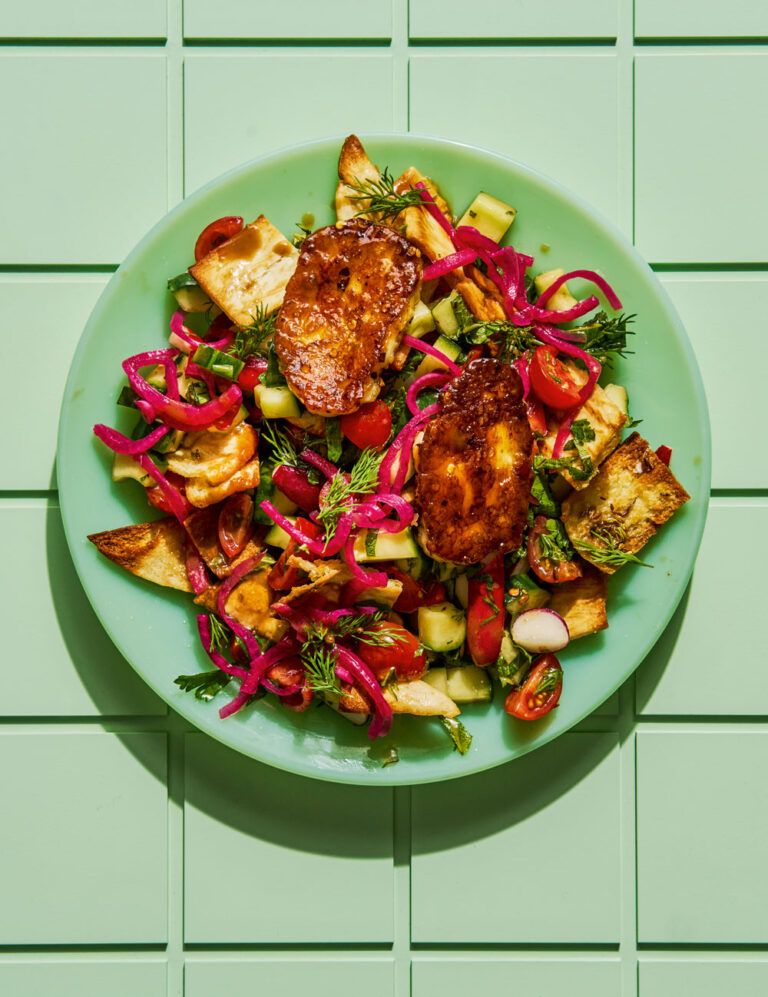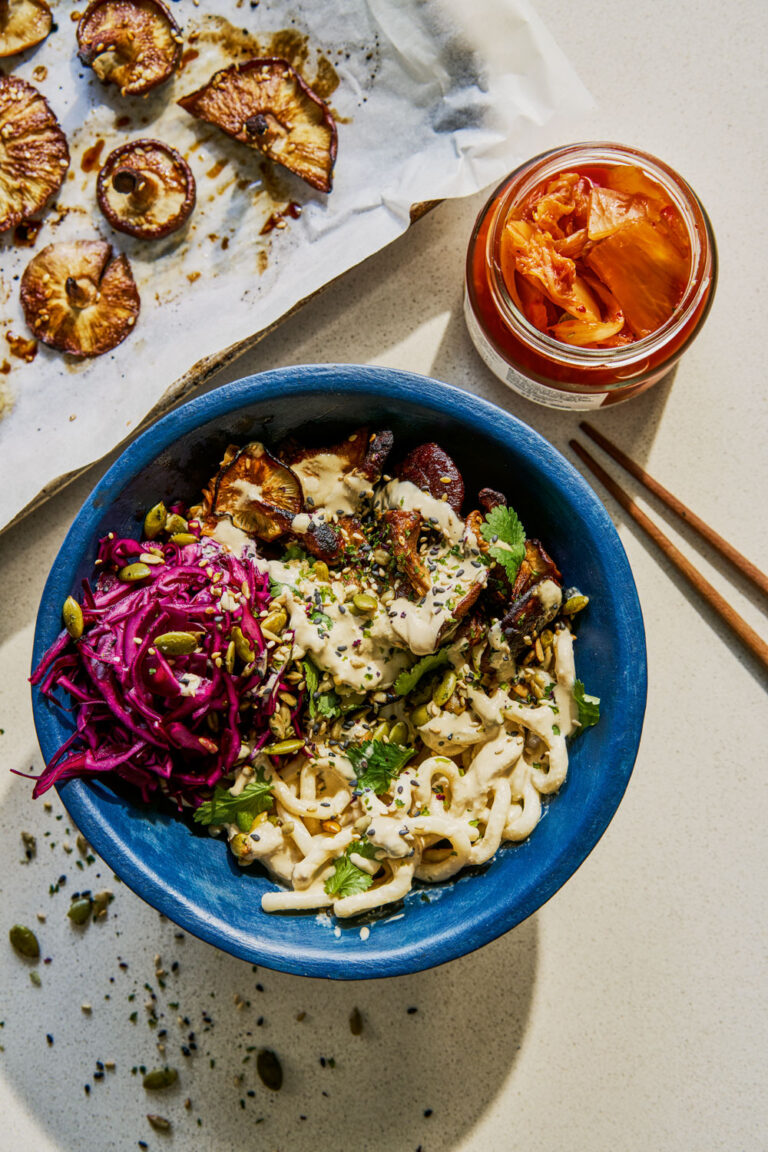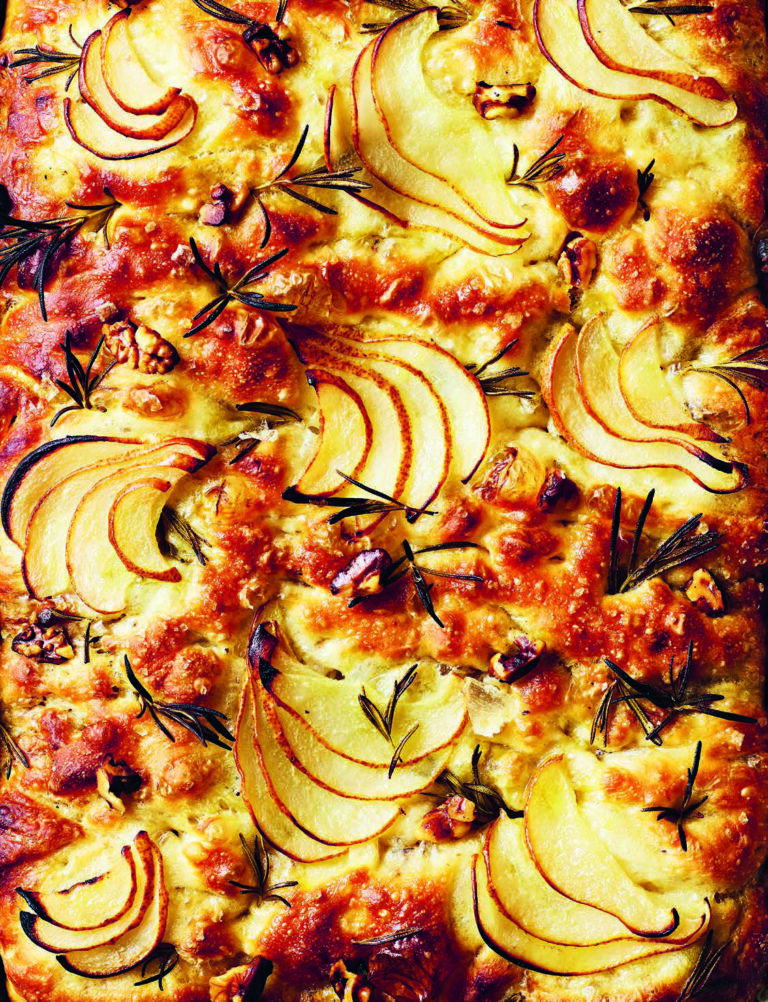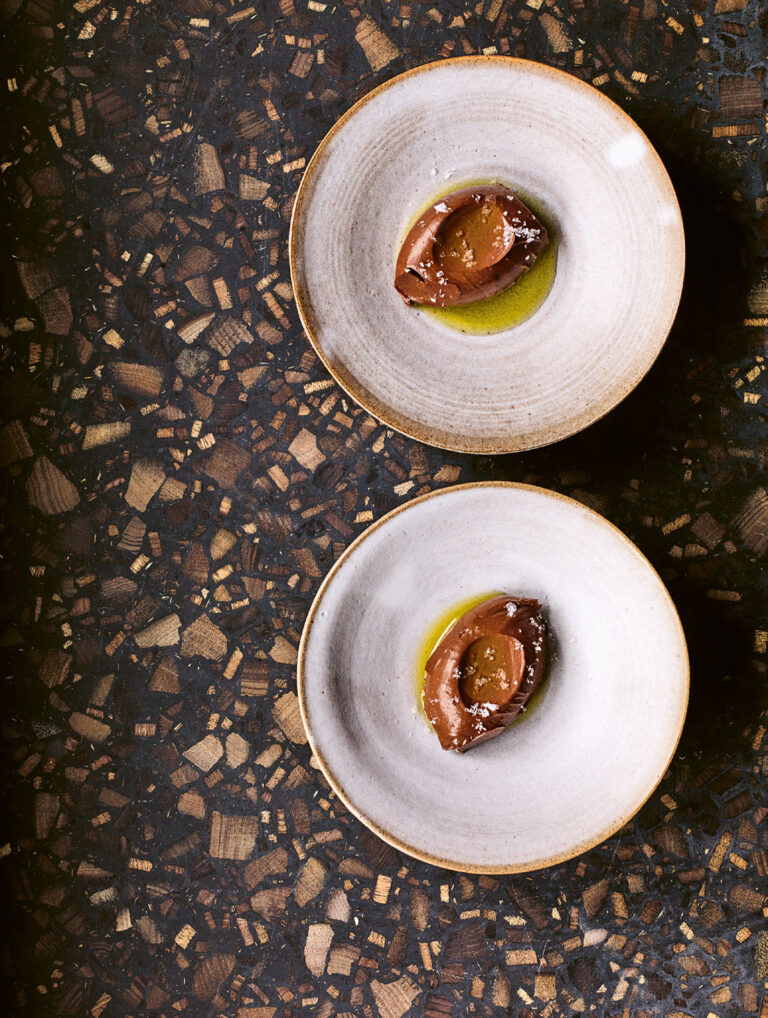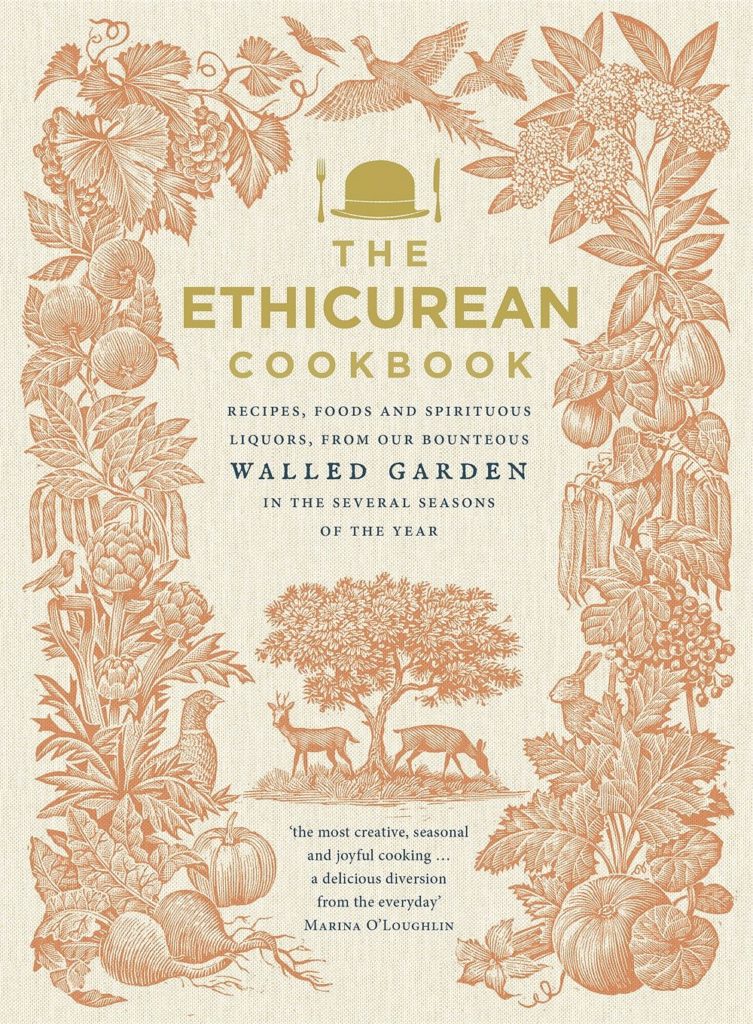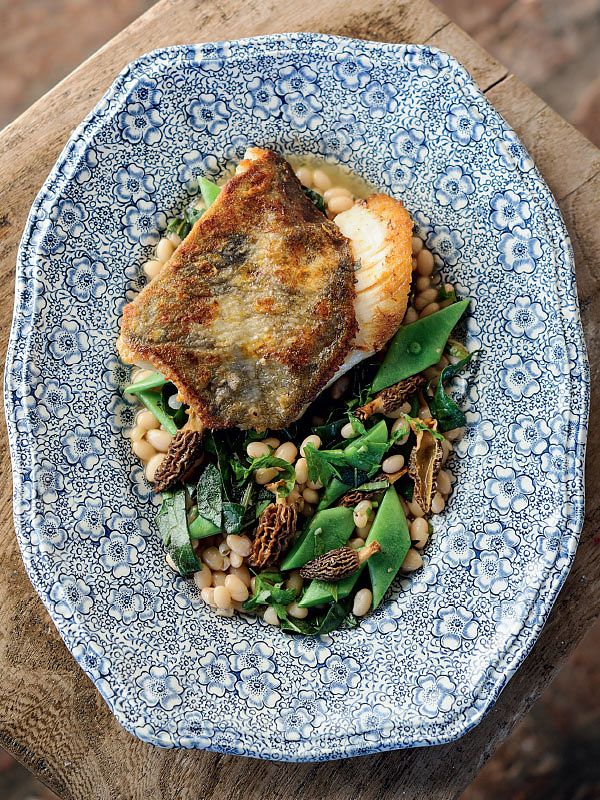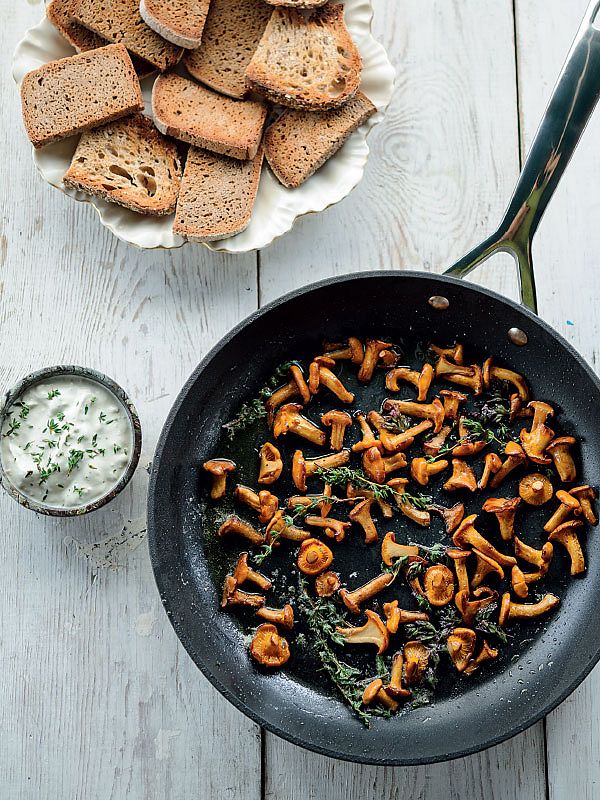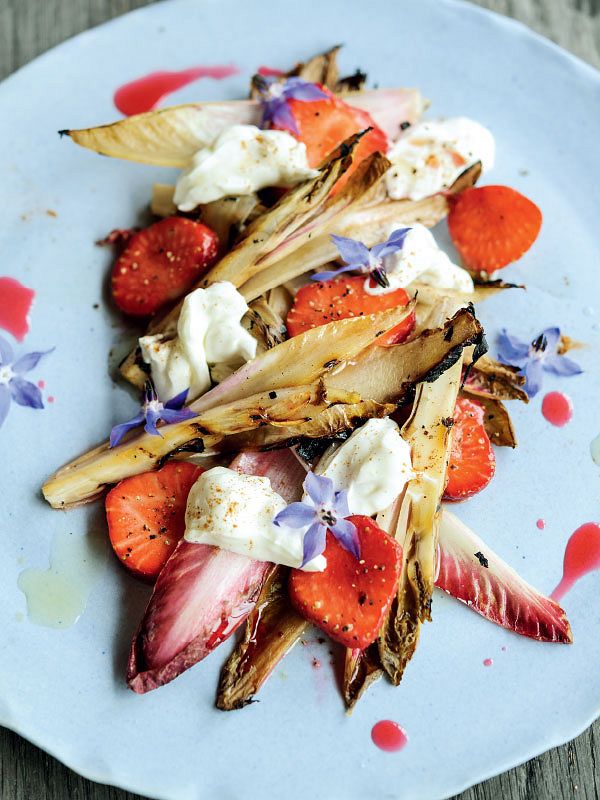Pineapple, Turmeric and Ginger Glazed Ham with ‘Piccalilli’
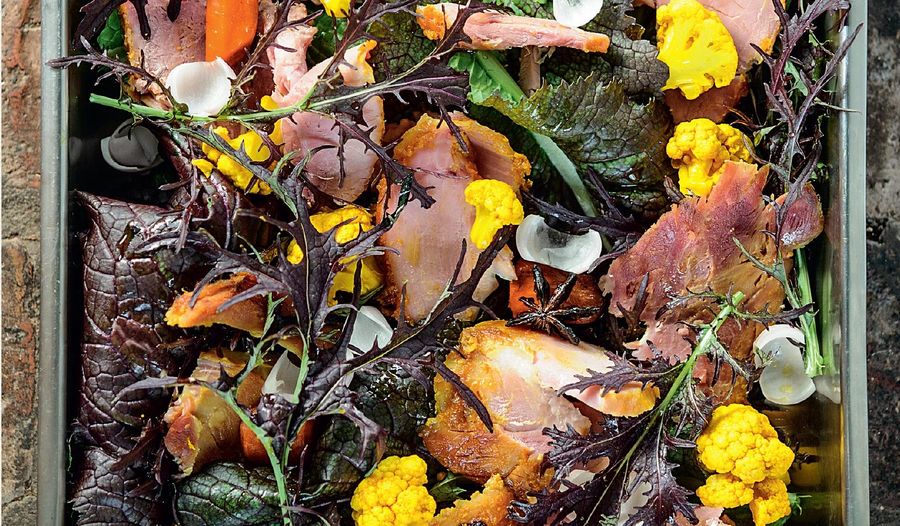
Serve up this showstopping pineapple, turmeric and ginger glazed ham from The Ethicurean Cookbook. Accompany with with a spicy twist on the classic piccalilli.
From the book
Buy From
Introduction
Salads do not get much better than this one. Gammon and pineapple have been a familiar combination on pub menus for decades. There is science behind this pairing, as we often find when we analyse classic food combinations. Pineapple contains the enzyme bromelain, which is a natural tenderiser for meat. Mexico also has a bromelain and pork love affair, as can be seen at the tacos al pastor stands. This outrageously scoffable street food comprises small corn tacos filled with shavings of pork that has been grilled under pineapple. The juice drips on to the meat as it cooks, caramelising and tenderising it in the process.
In the UK, the pineapple used to be a symbol of wealth and hospitality. Particularly during the eighteenth century, possession of this spiky fruit was so prestigious that there was a proliferation of pineapple pits in country houses across Britain. A pineapple pit was a demonstration of tremendous growing skill and dedication. The energy needed to grow this tropical fruit is monumental – the process involved a mixture of moist heat from fermenting oak bark or horse manure in the earth around the pineapple and an intricate set of furnaces and chimneys for additional heat. There are the ruined remains of a pineapple pit on privately owned land very near Barley Wood. It belonged to the slave-trade abolitionist William Wilberforce, a friend and ally of our Barley Wood benefactor; Hannah More, who built Barley Wood House in the late eighteenth century.
During December, pineapples from the Caribbean are in season. Try to find Fairtrade fruit that smells sweet at the base. This indicates that it has been picked close to ripeness, as pineapples do not ripen further after being picked.
Ingredients
| 1 | large pineapple |
| 250g | golden granulated sugar |
| 3 tbsp | ground turmeric |
| 50g | fresh ginger, peeled and finely diced |
| 1-2kg | free-range cooked ham |
| For the piccalilli: | |
| 200g | cider vinegar |
| 100g | caster sugar |
| 20 | coriander seeds |
| ½ tsp | dried chilli flakes |
| 100g | shallots, topped and tailed, sliced in half through the tops and separated into individual layers |
| 1 tbsp | ground turmeric |
| 100g | cauliflower florets |
| 100g | Glazed Star Anise carrots (see below) |
| For the salad dressing: | |
| 85ml | cold-pressed rapeseed oil or groundnut oil |
| 25ml | cider vinegar |
| 35ml | pineapple juice |
| 1 tsp | ground star anise |
| 1 tsp | Dijon mustard |
| 2 pinches | of salt |
| For the salad: | |
| 200g | Miike purple giant leaves (or other mustardy salad leaves) |
| 100g | salad leaves (we use a mixture of red frill, watercress and land cress) |
| 100g | winter lettuce leaves |
| A bunch | of coriander |
| A bunch | of chrysanthemum leaves, if available |
| For the glazed star anise carrots: | |
| 300g | carrots, peeled and cut into 2.5cm chunks |
| 20g | salted butter |
| 2 | star anise |
| 1 tsp | sugar |
| 1 pinch | of fine sea salt |
Essential kit
You will need a blender or food processor and a baking sheet.
Method
Heat the oven to 200°C/Gas Mark 6. Top and tail the pineapple and cut away the spiky skin. Cut the flesh away from the core and place in a blender or food processor. Pulse till smooth, then strain the mixture through a sieve, pressing with the back of a spoon to extract the juice. Reserve 35ml of the juice for the salad dressing (you won’t need the rest). Put the pulp in a bowl and mix with the sugar, turmeric and ginger. This is the glazing mixture for the ham.
Place the ham flat-side down on a baking sheet and spread the glazing mixture thickly over it. Cook for 30-40 minutes, until the glaze is caramelised. Set aside to cool.
For the piccalilli, heat the vinegar to boiling point, add the sugar and stir until dissolved. Add the coriander seeds, chilli flakes and shallots and bring back to a simmer. Remove the shallots with a slotted spoon and set aside to cool. Add the turmeric to the hot liquid, followed by the cauliflower florets. Bring to a simmer, then stir well. Remove from the heat and leave the cauliflower to cool in the yellow vinegar. It will pick up the colour of the turmeric as it cools.
To make the dressing, place all the ingredients in a blender and blend until emulsified.
To make the carrots, heat a pan over a medium heat. The pan should be big enough to hold the carrots in a single layer. When the pan is hot, add the butter (the butter should sizzle but not burn). The second the sizzling subsides, add the star anise and carrots. Toss the carrots through the butter to coat evenly, then add the sugar and salt. Add about 330ml cold water to the pan (almost enough to cover the carrots), and turn the heat up to high. It may take 5-10 minutes for the water to almost fully reduce, and then the carrots will begin to sizzle again. Stir the carrots vigorously, so they begin caramelising evenly on all sides. When they are an even, golden colour, remove from the pan.
Arrange all the salad leaves on serving plates, reserving a few of the smaller red frill for garnish. If it helps to cut the Miike purple giant down, then do so. Slice the ham and place a couple of slices on top of the leaves, intertwined with pieces of the deconstructed piccalilli and the glazed carrots. Finish by lightly drizzling over the dressing and garnishing with the reserved leaves.
Reviews
Have you tried this recipe? Let us know how it went by leaving a comment below.
Thank you for your rating. Our team will get back to any queries as soon as possible.
Please note: Moderation is enabled and may delay your comment being posted. There is no need to resubmit your comment. By posting a comment you are agreeing to the website Terms of Use.
